
Between 1775 and 1783, American rebels battled the British for our fledgling country’s independence. Armed with the most sophisticated armaments of the era, both armies waged 165 bloody battles. The Americans ultimately won, but at the cost of an estimated 6,800 soldiers killed in action. Another 6,100 were wounded, with a further 17,000 dying from disease. (These are the 12 wars where the most Americans died outside of combat.)
On the British side, estimated battlefield deaths, injuries, death from disease, prisoners of war, and missing soldiers totaled 24,000.
Soldiers for both armies carried small arms, mostly muskets, pistols, and rifles. Of those small arms, muskets dominated the Revolutionary War battlefield. Soldiers could load the gun swiftly and were able to fire three rounds a minute, the standard at the time. But what they offered in speed they lacked in accuracy. While muskets could hit a target up to 175 yards, they were most accurate at a range of only 25 to 50 yards. In fact, it’s estimated that only 20% of the lead fired from a musket actually hit the intended target. (In contrast, the flintlock rifle makes our list of the 18 deadliest weapons of all time.)
To compile a list of 13 guns that were used in the American Revolutionary War – on both sides – 24/7 Tempo reviewed several sites about the history of the war, including those of the American Battlefield Trust and the American Revolution Institute, and also the educational site Sutori.
Click here to see 14 guns that helped fight the Revolutionary War
Many American militias went into the fight with weapons brought from their homes, not arms issued by the Continental Congress. British, French, Dutch, and Spanish military muskets acquired during the early colonial period also armed American troops. And soldiers in the Continental Army seized whatever armaments they could, including a large haul of the British Pattern 1769 Short Land muskets. Because the Americans obtained so many of those muskets, in fact, it became the Americans’ most popular weapon. Nations sympathetic to the Americans’ cause also supplied weapons. France shipped 25,000 French Charleville muskets to the rebel soldiers in 1777.

British Pattern 1769 Short Land musket
The British Pattern 1769 Short Land musket armed British infantrymen at the start of the war. Yet soon after the conflict began, the Americans seized large batches of the armaments, and the musket became the most used firearm by the Continental Army – but carrying it wasn’t easy, as it weighed in at more than 10 pounds. It was also known by the nickname “the Brown Bess,” for reasons that aren’t clear.
[in-text-ad]

Charleville
France showed its support for the American fight for independence by supplying the Continental Army with French Charleville muskets, soon to be known as Charlevilles. In 1777, France shipped 25,000 of the .69 caliber weapons to the Colonies.
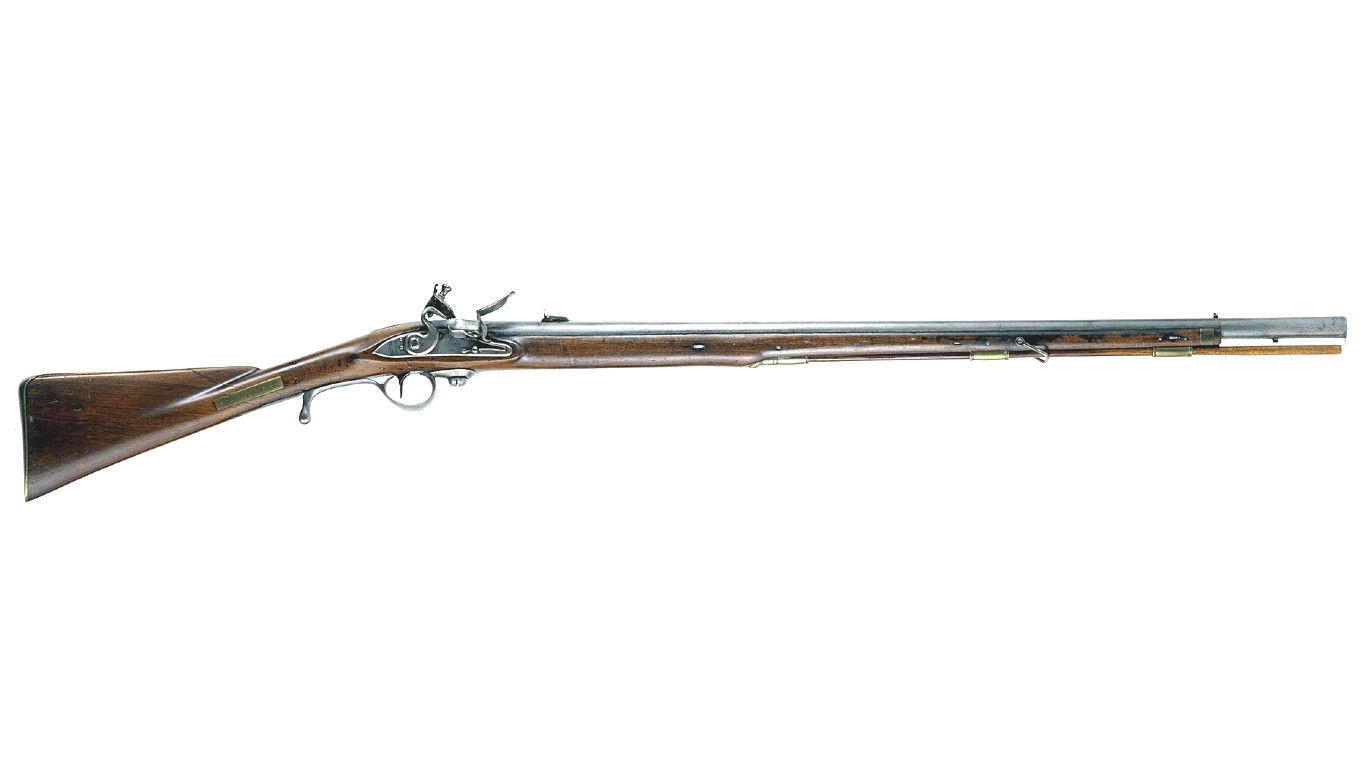
Ferguson rifle
British Major Patrick Ferguson invented the rifle that bears his name sometime in the 1770s. What made Ferguson’s armament unique was its ability to fire seven rounds a minute. At the time, firing three or four rounds was considered the standard. During the Battle of Kings Mountain in South Carolina, Ferguson was killed commanding forces loyal to the British.
Flintlock pistol
Developed in the early 16th century in France, the flintlock pistol was a notable advancement in weaponry. The flintlock pistol has a frizzen, or striker, and a priming pan where the gunpowder is stored. When the soldier pulled the trigger, a spring action mechanism pushed the frizzen into the flint, causing sparks to ignite the gunpowder. The ball is then shot out from the pistol.
[in-text-ad-2]

Hessian dragoon pistol
The Hessian dragoon pistol gets its name from the fact the long, large-caliber guns were once standard issue for mounted troops from German states. The weapons saw action in the Revolutionary War when the British commanded auxiliary troops from the German principality of Hesse-Cassel. In August of 1777, American forces captured Hessian pistols at the Battle of Bennington.
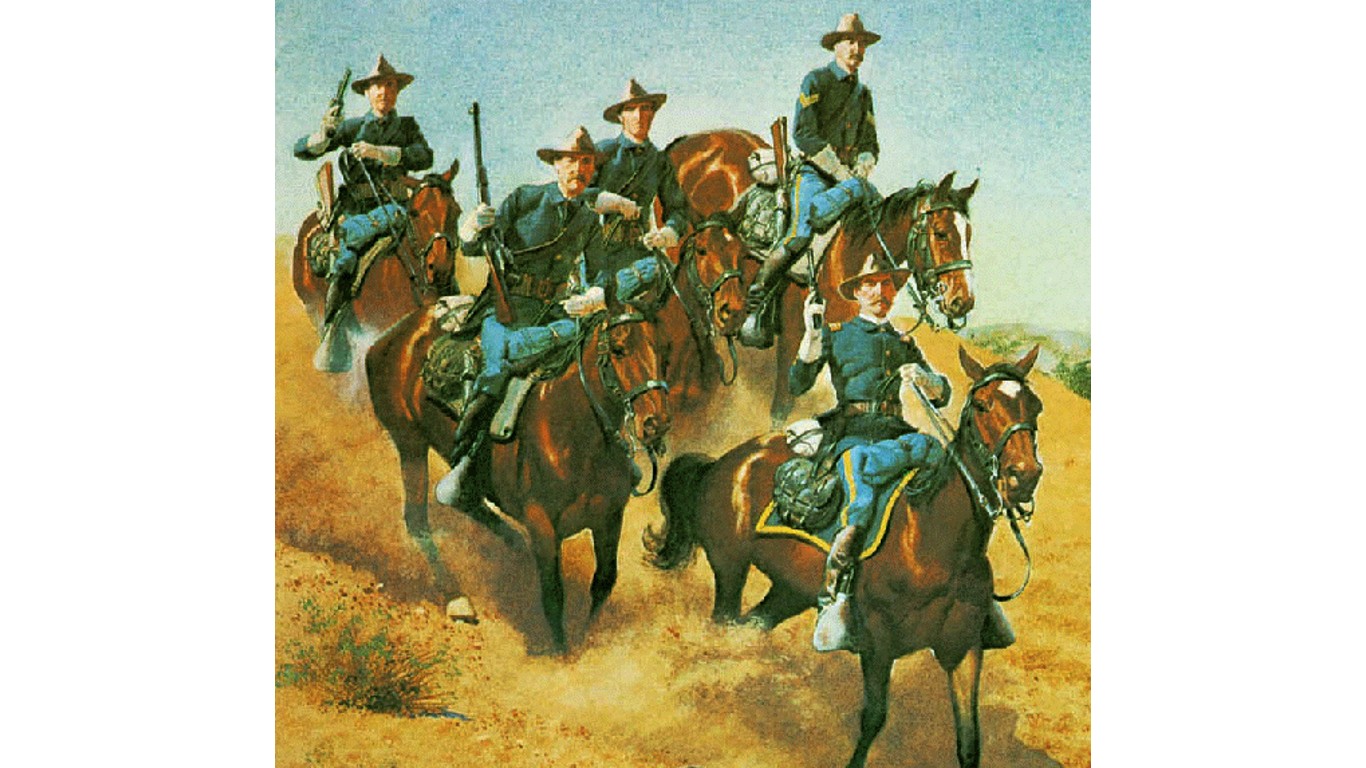
Holster pistol
Holster pistols were not standard issue for troops. Instead, officers purchased the guns from private gunsmiths. In battle, the pistols were held in leather holsters in the front of a cavalryman’s saddle.
[in-text-ad]
Kentucky flintlock pistol
One of the earliest firearms made in America, the Kentucky flintlock was used by early settlers and pioneers before troops carried it during the Revolutionary War and the Civil War. Soldiers often teamed the pistol with a Kentucky rifle. It was said to be Davy Crockett’s favorite gun.
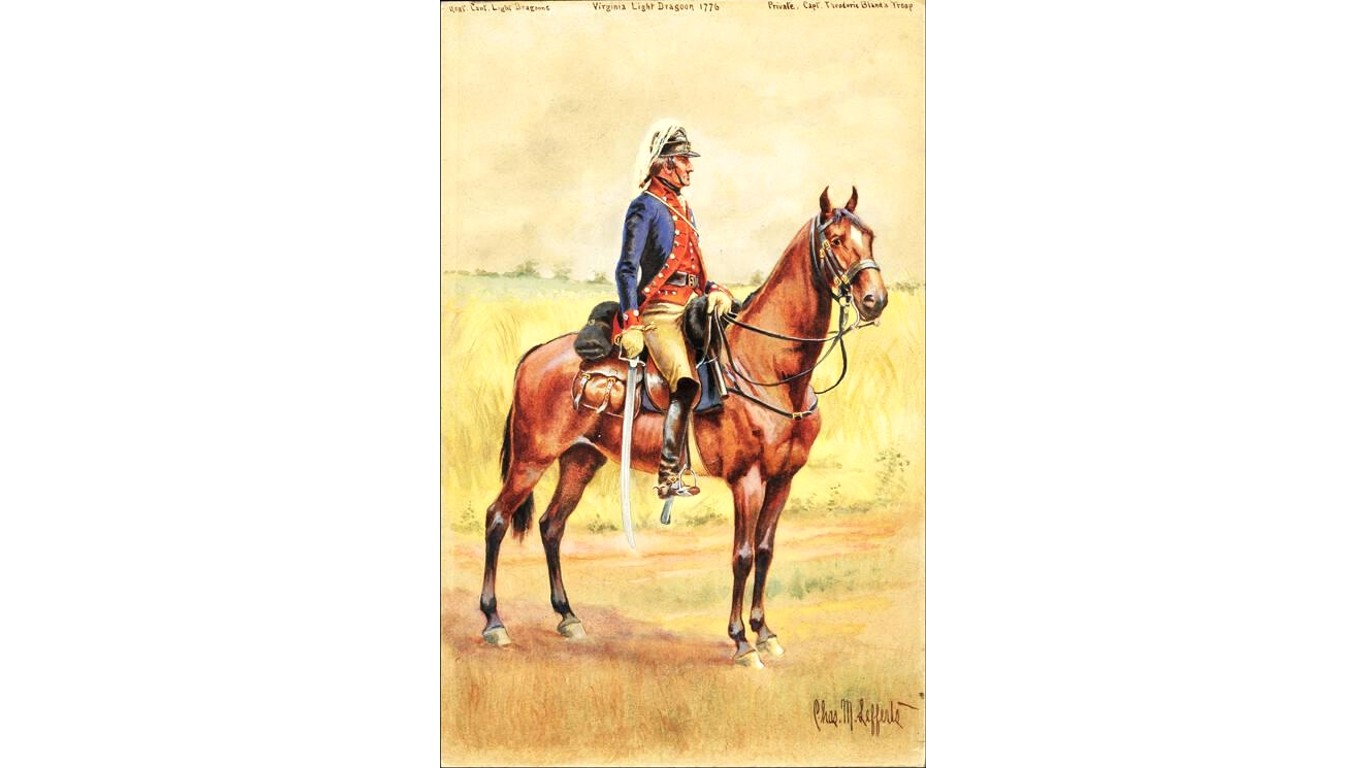
Light Dragoon pistol
A .67 caliber smoothbore flintlock pistol, the Light Dragoon was made specifically for the Light Dragoon regiments – cavalry regiments in the British Army. During the Revolutionary War, the armament was employed by the 1st Continental Light Dragoons and the 2nd Continental Light Dragoons.
Mòdele 1763 Pistol
A French military flintlock pistol, the Mòdele 1763 was used during the French-Indian War and to a lesser extent during the Revolutionary War. It is similar to the British Light Dragoon pistol.
[in-text-ad-2]
Pattern 1776 rifle
To battle the rebels, British troops received a shipment of more 1,000 Pattern 1776 rifles that same year. The guns were meant to even the playing field with rifles used by the Americans. Such rifles were supplied to the elite mounted and light military units. Meanwhile, the regular infantry had to make do with muskets.
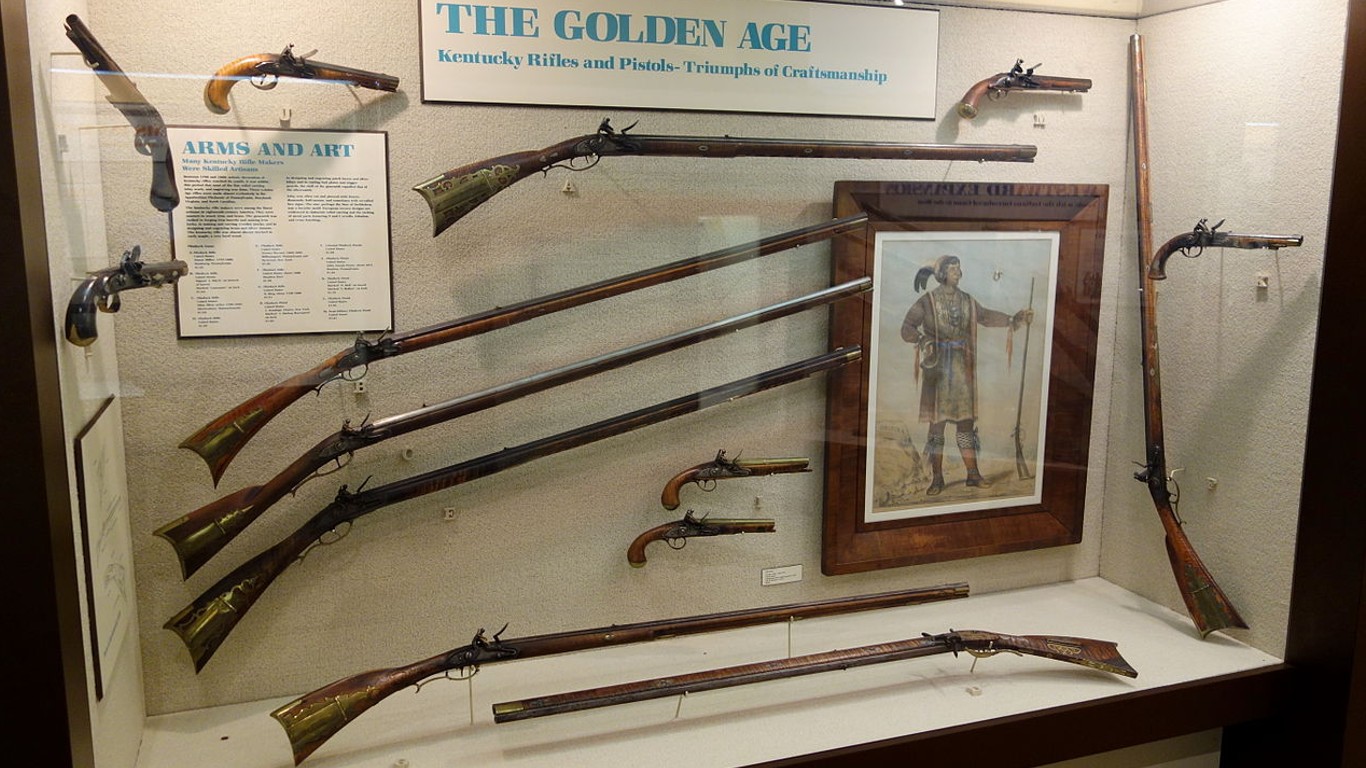
Pennsylvania long rifle
The Pennsylvania long rifle takes its name from the Pennsylvania-based independent gunmakers who produced the gun during the Revolutionary War. Long and slender, the rifle was favored by hunters. During wartime, it was accurate over long distances, but other limitations kept it from being an effective weapon: It took time to load, and a bayonet could not be affixed to it..
[in-text-ad]

Sea Service pistol
Navies also need guns, and the Sea Service pistol was invented for service on ships by the British in the second half of the 18th century. With a 12-inch barrel, the weapon was widely used during the Napoleonic Wars, French and Indian War, and the Revolutionary War. If you want to see a version of the gun being used, watch the 2003 Russel Crowe starrer “Master and Commander: The Far Side of the World.”
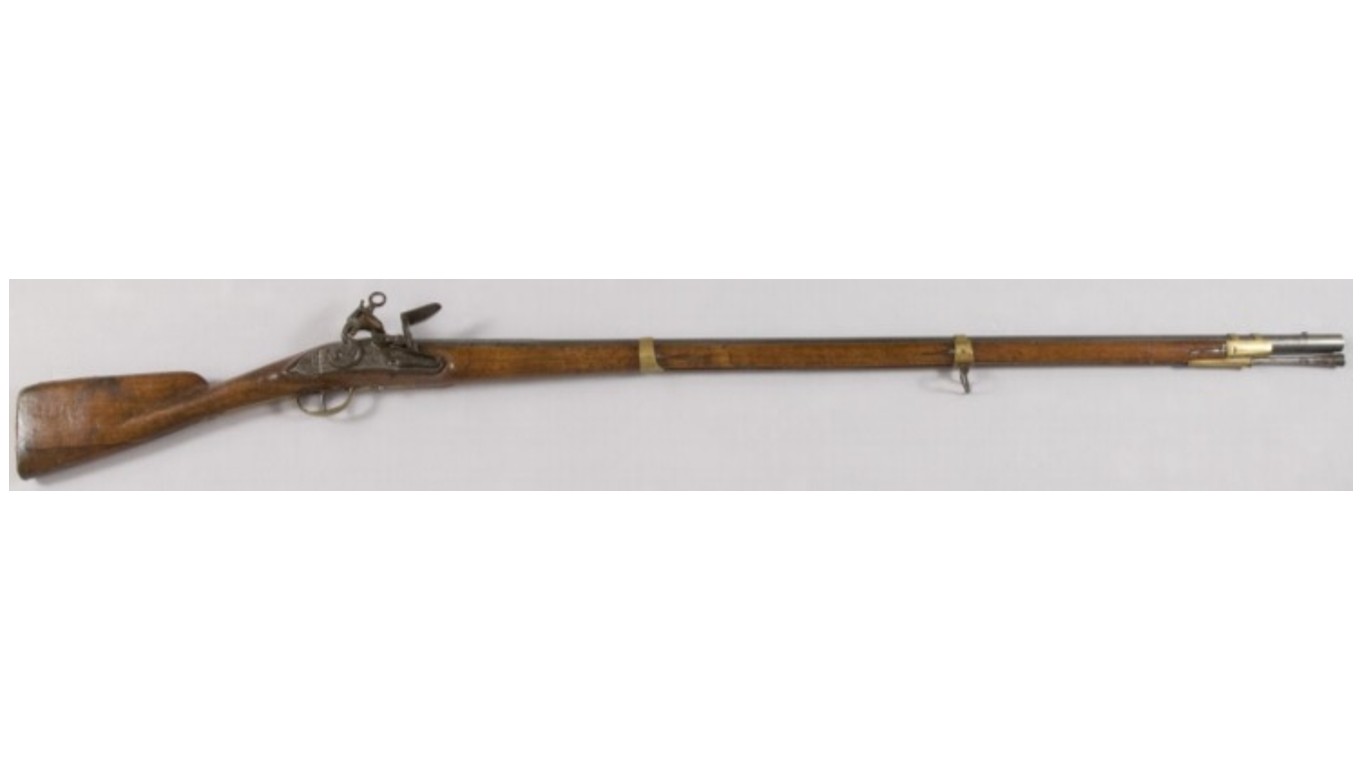
Spanish Model 1757 infantry musket
Although France was a major supplier of arms to the Americans, Spain also supplied gunpowder and other military stores to the American troops, including the Spanish Model 1757 musket. Infantrymen used the gun when Virginia state troops marched into the Illinois territory in 1779.
The #1 Thing to Do Before You Claim Social Security (Sponsor)
Choosing the right (or wrong) time to claim Social Security can dramatically change your retirement. So, before making one of the biggest decisions of your financial life, it’s a smart idea to get an extra set of eyes on your complete financial situation.
A financial advisor can help you decide the right Social Security option for you and your family. Finding a qualified financial advisor doesn’t have to be hard. SmartAsset’s free tool matches you with up to three financial advisors who serve your area, and you can interview your advisor matches at no cost to decide which one is right for you.
Click here to match with up to 3 financial pros who would be excited to help you optimize your Social Security outcomes.
Have questions about retirement or personal finance? Email us at [email protected]!
By emailing your questions to 24/7 Wall St., you agree to have them published anonymously on a673b.bigscoots-temp.com.
By submitting your story, you understand and agree that we may use your story, or versions of it, in all media and platforms, including via third parties.
Thank you for reading! Have some feedback for us?
Contact the 24/7 Wall St. editorial team.
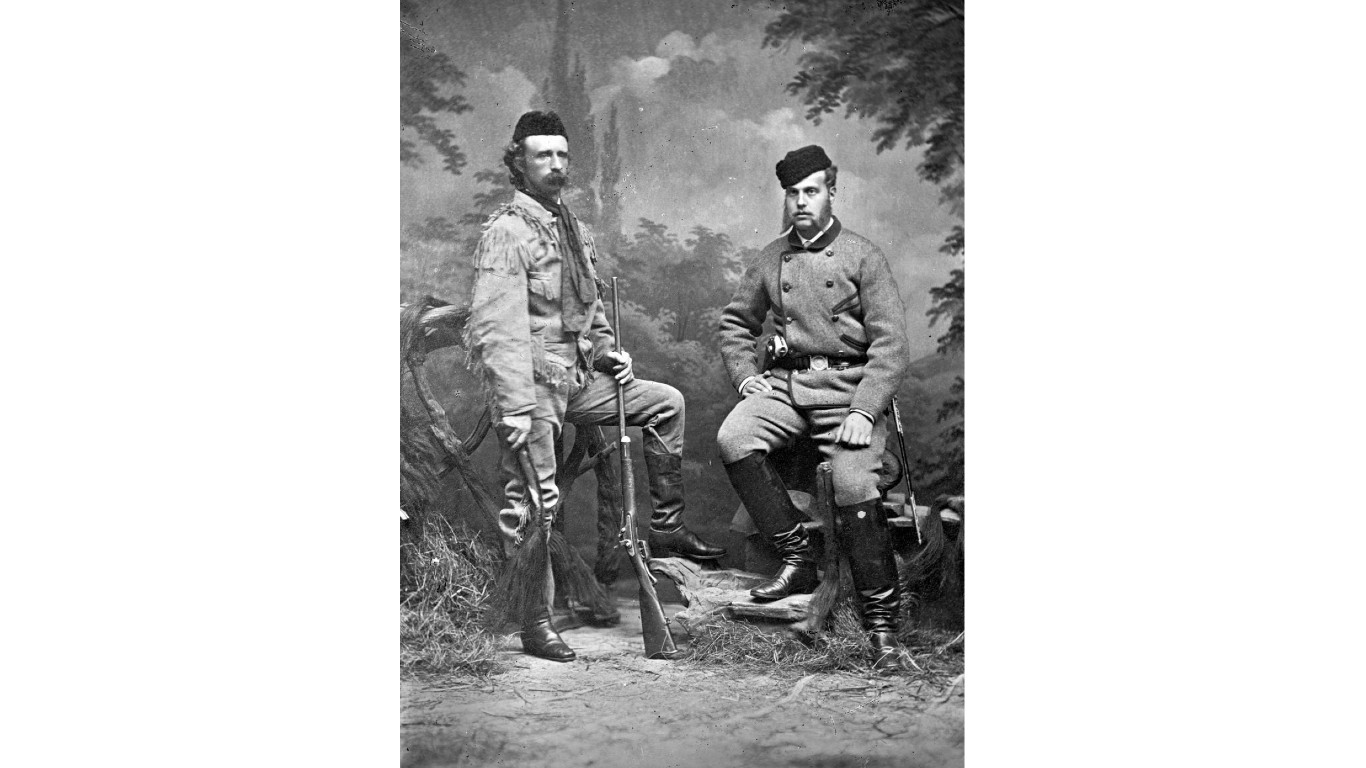 24/7 Wall St.
24/7 Wall St.
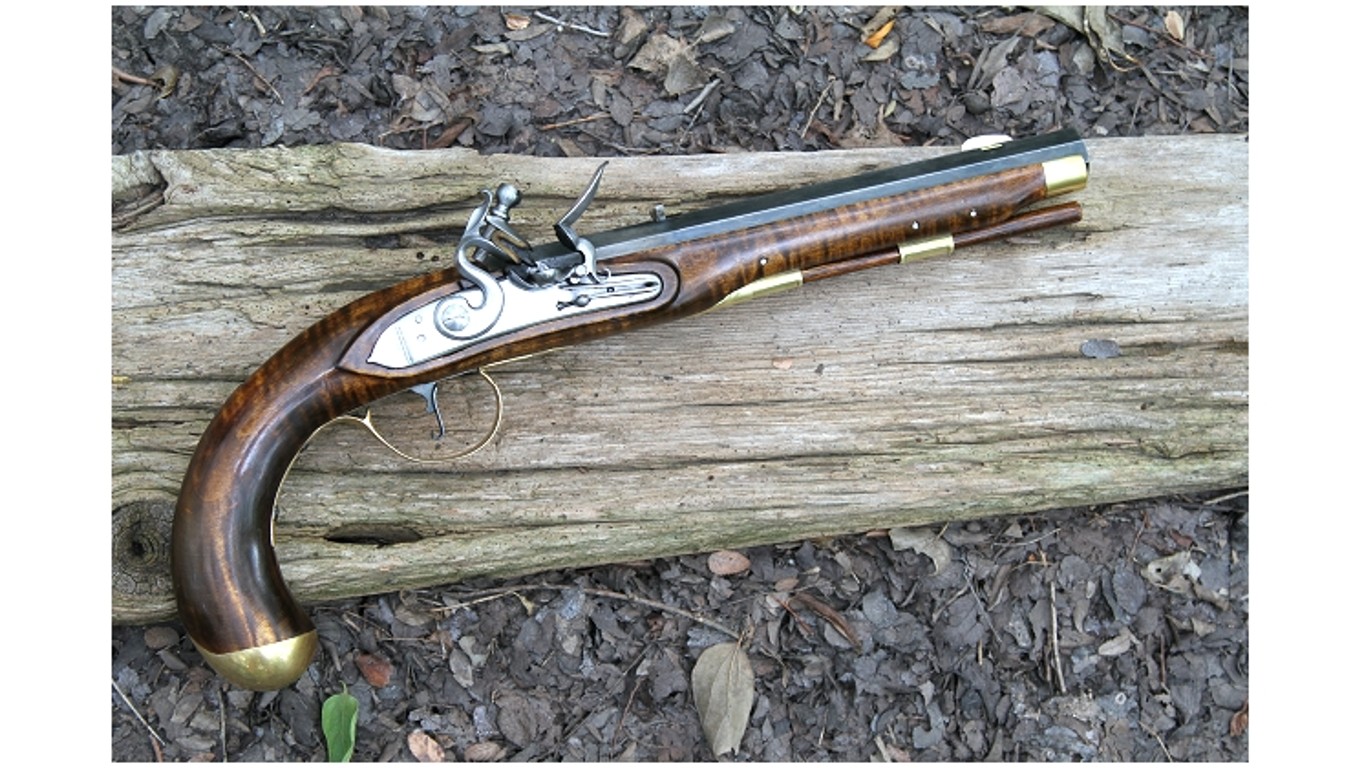
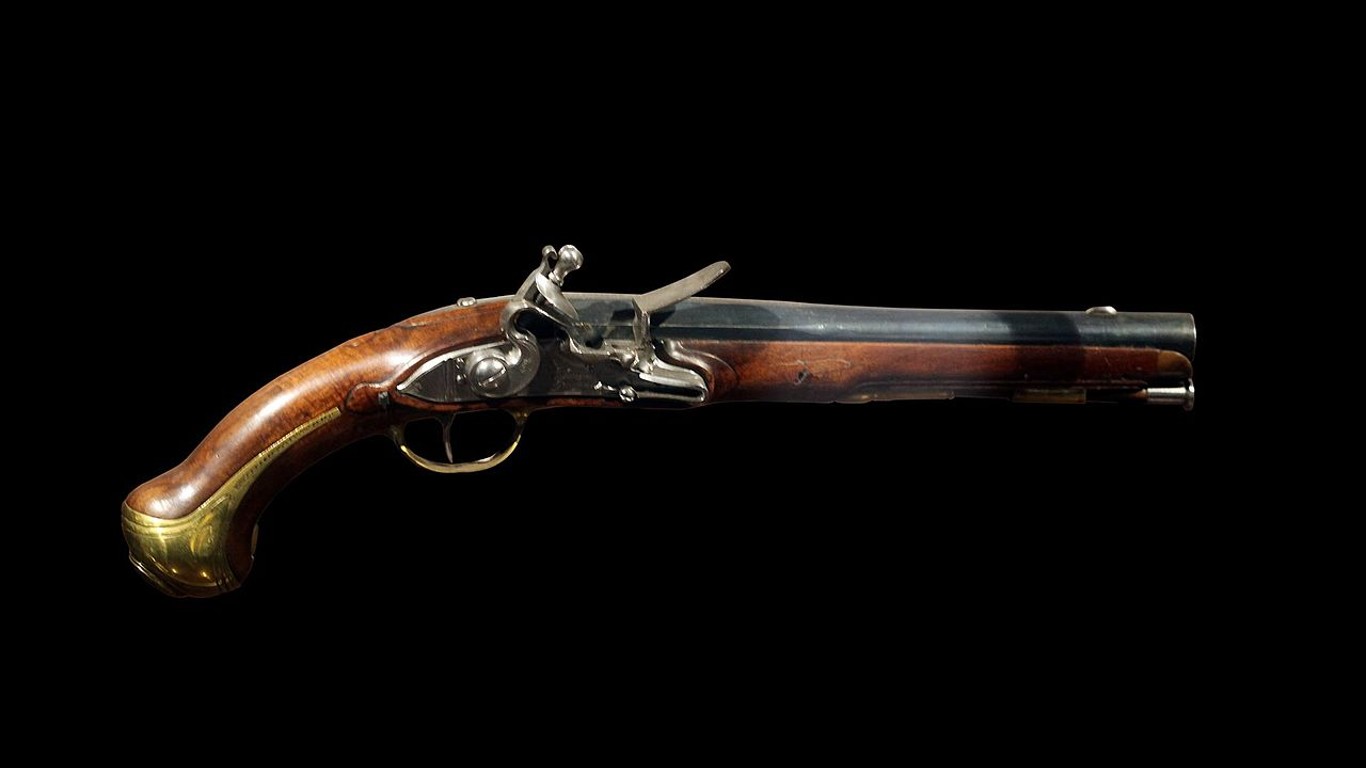
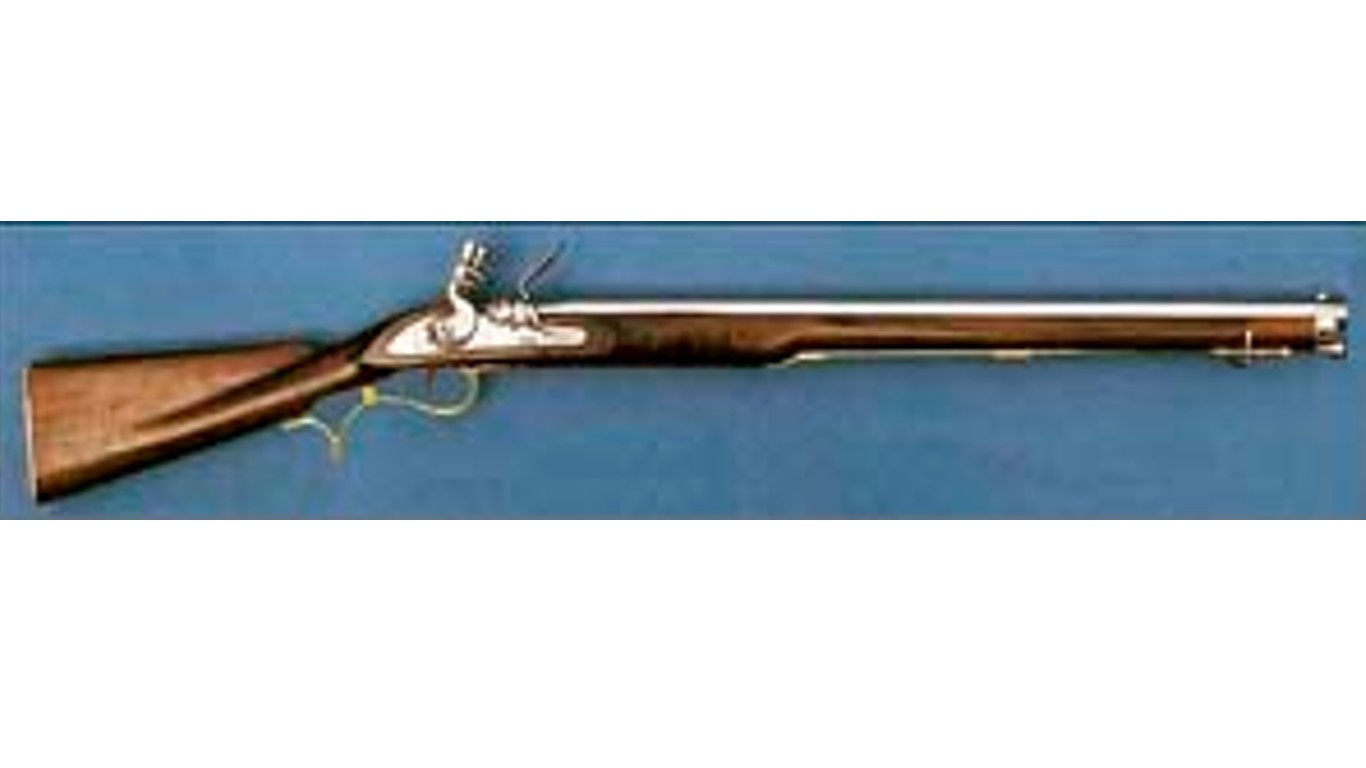
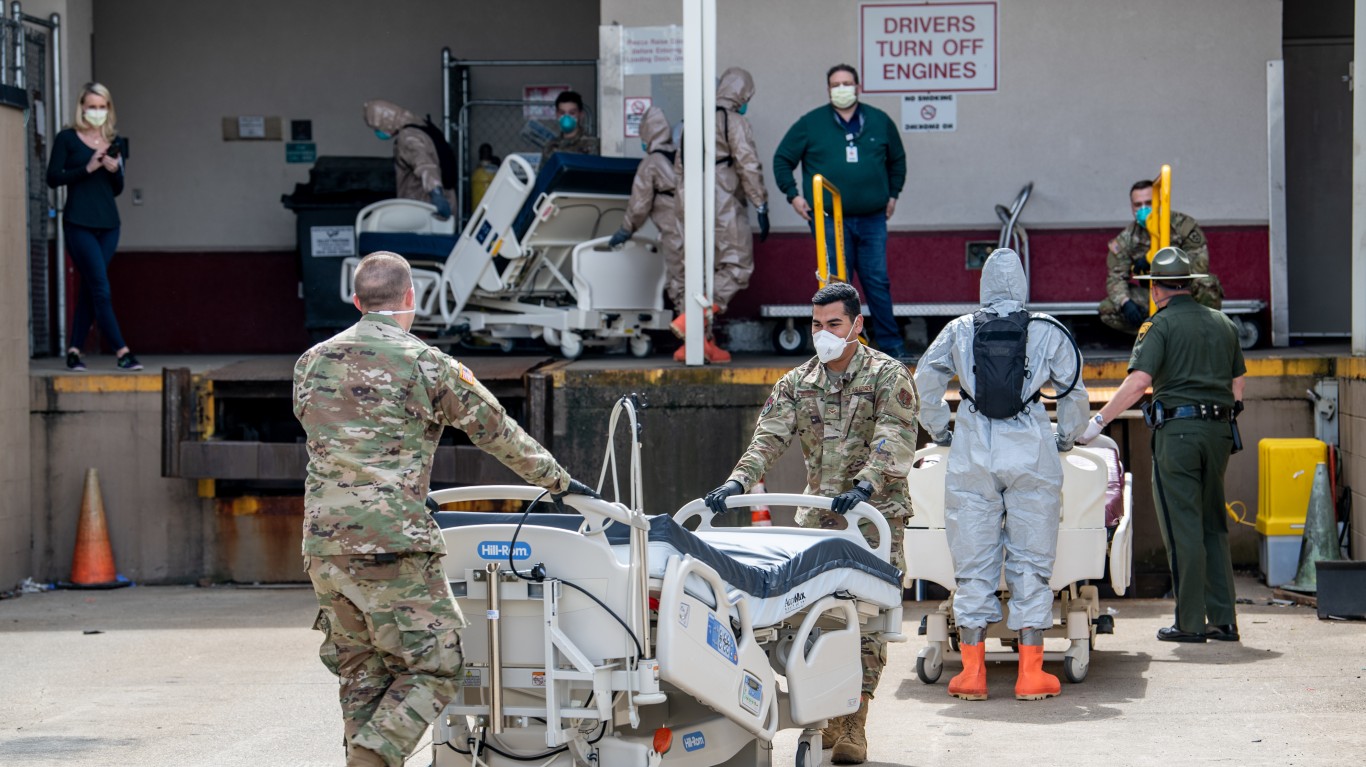 24/7 Wall St.
24/7 Wall St.